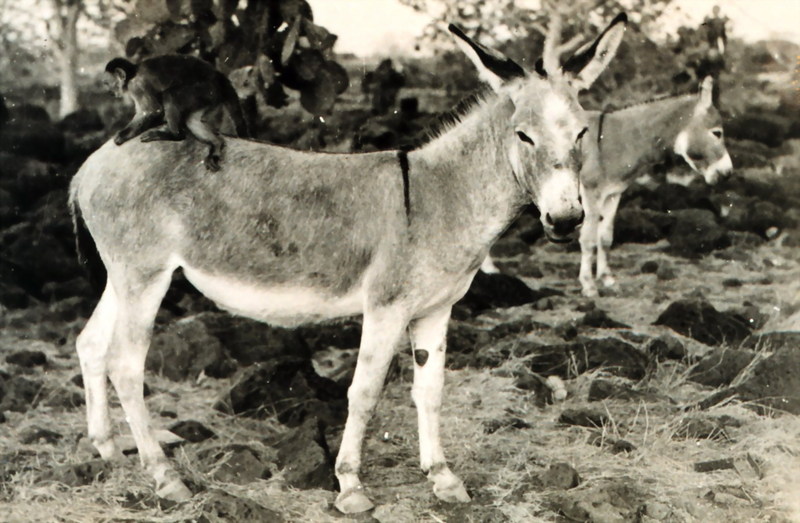|
| Query: wild horse | Result: 117th of 324 | |
Monkey & Donkey, Galapagos Islands, 1945
| Subject: | Monkey & Donkey, Galapagos Islands, 1945
| | Poster: | Phoby (phoby@notmyphoto.com)
| |

| Resolution: 1384x904
File Size: 288387 Bytes
Date: 2005:09:21 13:01:16
Upload Date: 2005:09:21 12:57:33
|
Monkey & Donkey, Galapagos Islands, 1945
A monkey helping preen a donkey in the Galapagos Islands
Image ID: theb1457, Historic C&GS Collection
Location: Galapagos Islands
Photo Date: 1945
Credit: C&GS Season's Report Wiles 1945
Photo Source:
The NOAA Photo Library - http://www.photolib.noaa.gov
The National Oceanic & Atmospheric Adminstration (NOAA) - http://www.noaa.gov/
Copyright Information - http://www.photolib.noaa.gov/aboutimages.html
|
Comments |
|---|
| | Guest |
|
| Donkey or ass, Equus asinus, is a domesticated animal of the horse family, Equidae. Most wild donkeys are between 1 and 1.60 m in length. Domestic donkeys stand from 0.9 to over 1.40 m tall. The Andalucian-Cordobesan breed of southern Spain can reach up to 1.60 m high. Donkeys are adapted to marginal desert lands, and have many traits that are unique to the species as a result. They need less food than horses. Overfed donkeys can suffer from a disease called laminitis. Unlike horse fur, donkey fur is not waterproof, and so they must have shelter when it rains. Wild donkeys live separated from each other, unlike tight wild horse herds. Donkeys have developed very loud voices, which can be heard for over three kilometers, to keep in contact with other donkeys of their herd over the wide spaces of the desert. Donkeys have larger ears than horses to hear the distant calls of fellow donkeys, and to help cool the donkey's blood. Donkeys' tough digestive system can break down near-inedible vegetation and extract moisture from food more efficiently. Donkeys can defend themselves with a powerful kick of their hind legs. |
^o^
Animal Pictures Archive for smart phones
^o^
|
|
|

